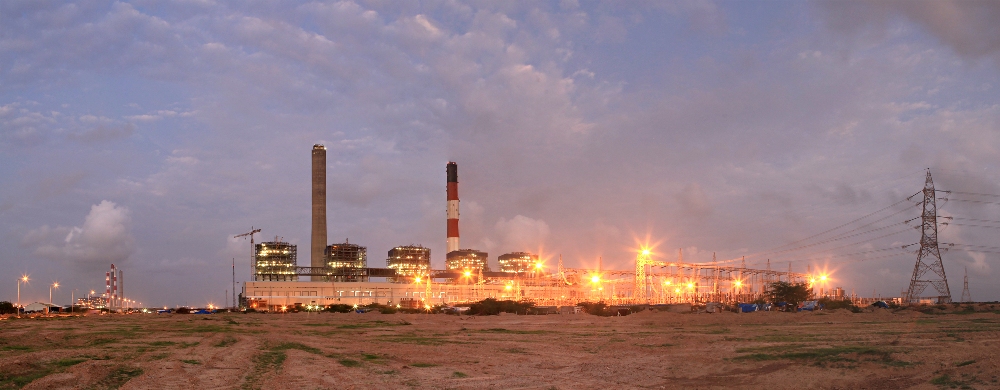In its latest Load Generation Balance Report (LGBR), Central Electricity Authority (CEA) has envisaged India to have an energy surplus of 2.7 per cent in FY21 with the peak surplus for the year estimated at 9.1 per cent.
The latest Load Generation Balance Report (LGBR) 2020-21, released very recently by CEA, outlines the assessment of the anticipated power supply position in the country for FY21. The report takes into consideration the power availability from various generating stations in operation (both conventional and renewable ones), fuel availability, and anticipated water availability at hydropower stations.
Power generation capacity addition of 26,117 mw has been considered for FY21.
Power generation capacity addition of 26,117.14 mw has been considered for FY21 comprising 10,591.15 mw of thermal, 1,145.99 mw of hydro and 14,380 mw of renewable energy sources (RES).
The gross energy generation in the country has been assessed as 1,330 billion kwh (or billion units or BU) from conventional power plants in operation (including import from hydropower stations in Bhutan), and from generating units expected to be commissioned during FY21.
The generation programme has been firmed up in consultation with the generating companies/ power utilities and taking into consideration the proposed maintenance schedule of the generating units during FY21.
CEA estimates 150 billion kwh of electricity generation from renewable energy sources in FY21.
In addition, 150 BU of energy is expected from RES during FY21. The monthly power requirement for all States/UTs in terms of peak demand and energy requirement have been assessed considering the past trend and have been finalized in consultation with the concerned power utilities.
The anticipated power supply position of each state/UT has been worked out and the assessment has been discussed with the concerned utility at the fora of respective Regional Power Committee (RPC).
The northern, western and north-eastern regions are all expected to be energy and peak demand surplus in FY21.
Based on the methodology outlined above, the country as a whole is likely to have a peak surplus of 9.1 per cent and energy surplus of 2.7 per cent with the generation programme finalized for FY21, CEA said in its LGBR.
| Anticipated Power Supply Position for FY21 | |||||||||
| Region | Energy | Peak | |||||||
| Reqmt | Availability | Surplus/(-) Deficit | Reqmt | Availability | Surplus/(-) Deficit | ||||
| MU | MU | MU | per cent | MW | MW | MW | per cent | ||
| Northern | 421,300 | 441,030 | 19,730 | 4.7 | 70,200 | 74,543 | 4,343 | 6.2 | |
| Western | 402,799 | 416,164 | 13,365 | 3.3 | 61,310 | 64,888 | 3,578 | 5.8 | |
| Southern | 389,962 | 398,373 | 8,411 | 2.2 | 57,278 | 54,289 | -2,989 | -5.2 | |
| Eastern | 174,925 | 170,464 | -4,461 | -2.6 | 26,404 | 28,501 | 2,097 | 7.9 | |
| North-eastern | 18,542 | 19,054 | 512 | 2.8 | 3,094 | 3,242 | 148 | 4.8 | |
| All-India | 1,407,528 | 1,445,085 | 37,557 | 2.7 | 199,348 | 217,507 | 18,159 | 9.1 | |
| Source: CEA Load Generation Balance Report 2020-21 | |||||||||
Surplus energy is anticipated of the order of 4.7 per cent, 3.3 per cent, 2.2 per cent and 2.8 per cent in the northern, western, southern and north-eastern regions respectively. The eastern region is likely to face energy deficit of 2.6 per cent which can be met from surplus power in other regions.
The peak surplus of the order of 6.2 per cent, 5.8 per cent, 7.9 per cent and 4.8 per cent is anticipated in northern, western, eastern and northeastern regions respectively. The southern region is likely to face peak deficit of the order of 5.2 per cent.
COVID-19 impact
In the wake of COVID-19 pandemic outbreak, the demand for electricity has witnessed a significant decline in the months of April and May of 2020, CEA said. A comparison of actual versus anticipated energy requirement and peak demand during the months of April, 2020 and May, 2020 has been done which shows a reduction of 30 per cent and 15 per cent in actual peak demand and 28 per cent and 21 per cent reduction in actual energy requirement as compared to LGBR figures for the months of April and May 2020 respectively.
It is expected that with easing of restrictions imposed during lockdown following the outbreak of COVID-19 pandemic the economic activity will gain pace and the demand for electricity will track the trajectory outlined in this LGBR 2020-21.
Note: FY21 runs from April 1, 2020 to March 31, 2021.
Featured photograph showing long view of the Mundra UMPP in Gujarat (Photo: Tata Power) is for illustration only



